Ah, the Audiolab M-DAC, first released in 2011, was hailed as a triumph of digital wizardry — a veritable beacon of hope in a world of audio mediocrity. Naturally, it was showered with accolades, as if it were the second coming of Freddie Mercury himself. Then came the M-DAC+ in 2016, and somehow, it too earned the kind of praise reserved for a flawless royal heir. Fast forward to today, and Audiolab has unveiled the D7 and D9 — the supposed “descendants,” crafted with the kind of precision only years of tweaking and tinkering can bring.
These two new DACs are hailed as the next step in the ongoing evolution of Audiolab’s digital empire — because why settle for “perfect” when you can make something that might be a smidgen better? The D7 and D9 are said to carry the same M-DAC DNA, only now they’ve been honed with “advanced” technical developments.
Whether that means they’ve actually improved or merely slapped on a fresh coat of paint remains to be seen. However, based on my rather favorable long-term relationship with the Audiolab 6000A Integrated Amplifier, and my initial impressions of the new 6000A MKII, I can confidently say Audiolab didn’t take a detour to the Home Depot paint aisle for this one.
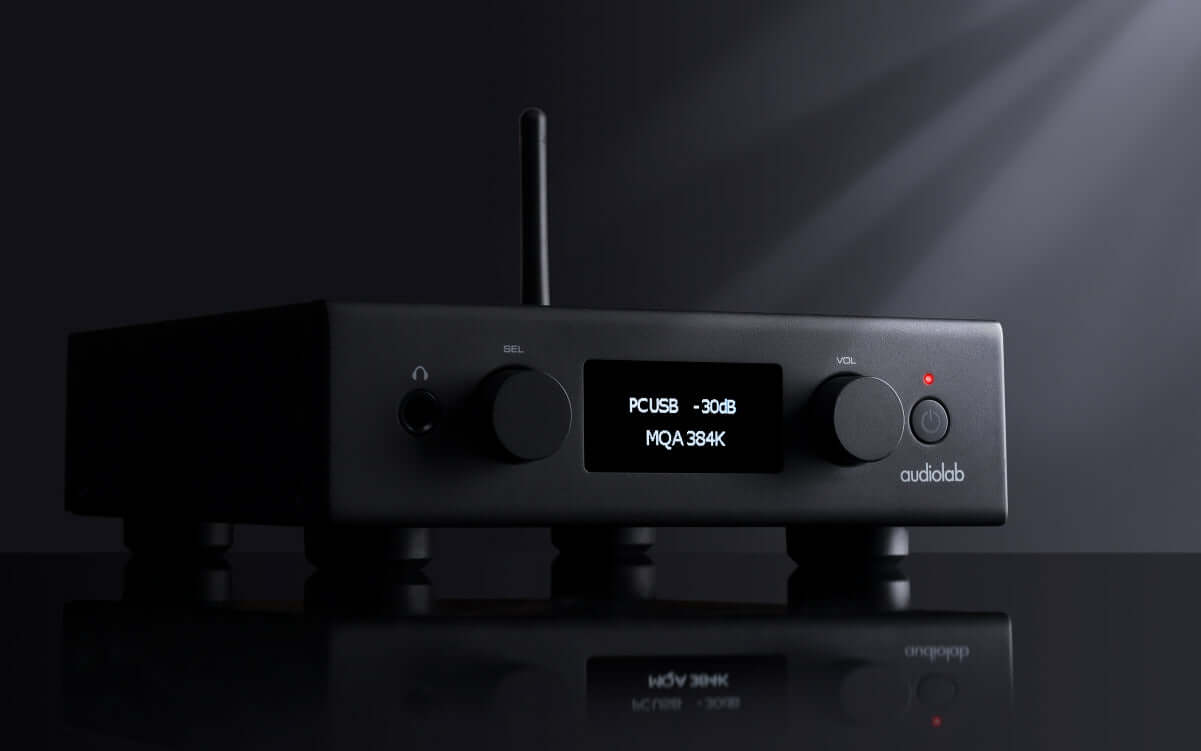
D7: A Petite Box of Tricks—or Just Enough DAC to Keep the Peasants Happy?
The Audiolab D7 is the more affordable of the two new DACs, and it’s also the smaller one—though don’t mistake its modest footprint for lack of ambition. This little box tries to do it all: DAC, preamp, and headphone amp, all packed into something about the size of a large sandwich — albeit without the full trappings of something like a Gatsby.
At its core is the ES9038Q2M, a 32-bit Sabre DAC chip that Audiolab has clearly grown quite fond of—it’s also in the 7000A and 6000A MkII integrated amps. Audiolab’s been wrangling ESS chips since the original M-DAC, and they’ll be the first to tell you no one else understands these “temperamental little beasts” quite like they do. Debatable but sure.
They’ve wrapped the chip in their usual bespoke circuitry, which wrings the most out of ESS’s HyperStream II architecture and Time Domain Jitter Eliminator—tech-speak for “no jitter, no noise, and a dynamic range wider than the moat around a Scottish castle.” Add to that their own clocking and power circuits and a Class A post-DAC filter, and you’ve got a setup that’s likely to get the job done connected to a network player or CD player.
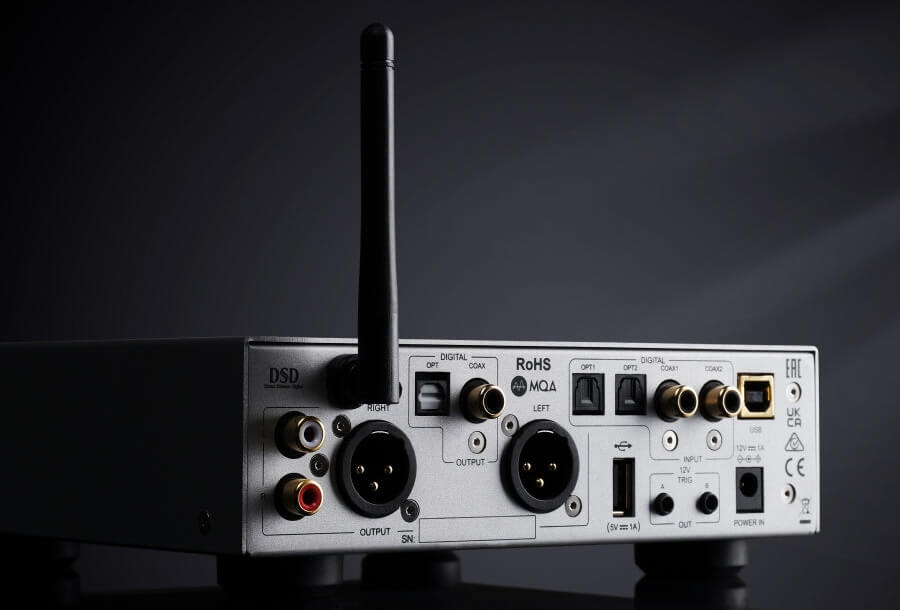
It supports PCM up to 32-bit/768kHz, DSD512 over USB, is MQA-compatible (if you’re still into that sort of thing…which like nobody is), and comes Roon Tested. All in all, the D7 feels like Audiolab’s way of saying, “Yes, we still know how to make a proper DAC—now quit asking.”
The D7 isn’t just a DAC—it’s a full-blown digital insurgency. Four S/PDIF inputs (two coax, two optical), USB HDD support for your dusty flash drives, and a USB-B port for whatever backwater tech you’re still using—PCs, Macs, tablets, you name it.
Outputs? Oh, it’s got options: coaxial, optical, RCA, and fully balanced XLR—because some of us still believe in choice. Bluetooth 5.1 is on board too, with aptX HD support, so you can stream your rebellion in high-res without dropping signal like a bucket of stormtroopers.
Save the bandwidth. Save the sound. Save the dream.
The Audiolab D7 is a DAC that doesn’t just show up—it arrives ready to work and, quite frankly, doesn’t give you much choice in the matter. If you’re into tweaking, it lets you upsample digital audio data to a whopping 352.8kHz or 384kHz. There are five DAC reconstruction filter settings, which might come in handy when you’re dealing with some of the questionable-quality digital files out there (no, I’m not pointing fingers, but someone is clearly sending you garbage).
Audiolab also knows that you can’t have too many ways to listen to your music, so there’s a 6.35mm socket for wired headphones. Because, clearly, we’re all tired of wireless headphones trying to be smarter than us.
Now, the D7 will fit seamlessly into your setup—because, of course, it will. You can choose between fixed or variable modes on the analog outputs. Fixed mode lets the volume be controlled by your integrated amp or preamp, while variable mode gives you control right through the D7 if you’re connecting it to a power amp or powered speakers.
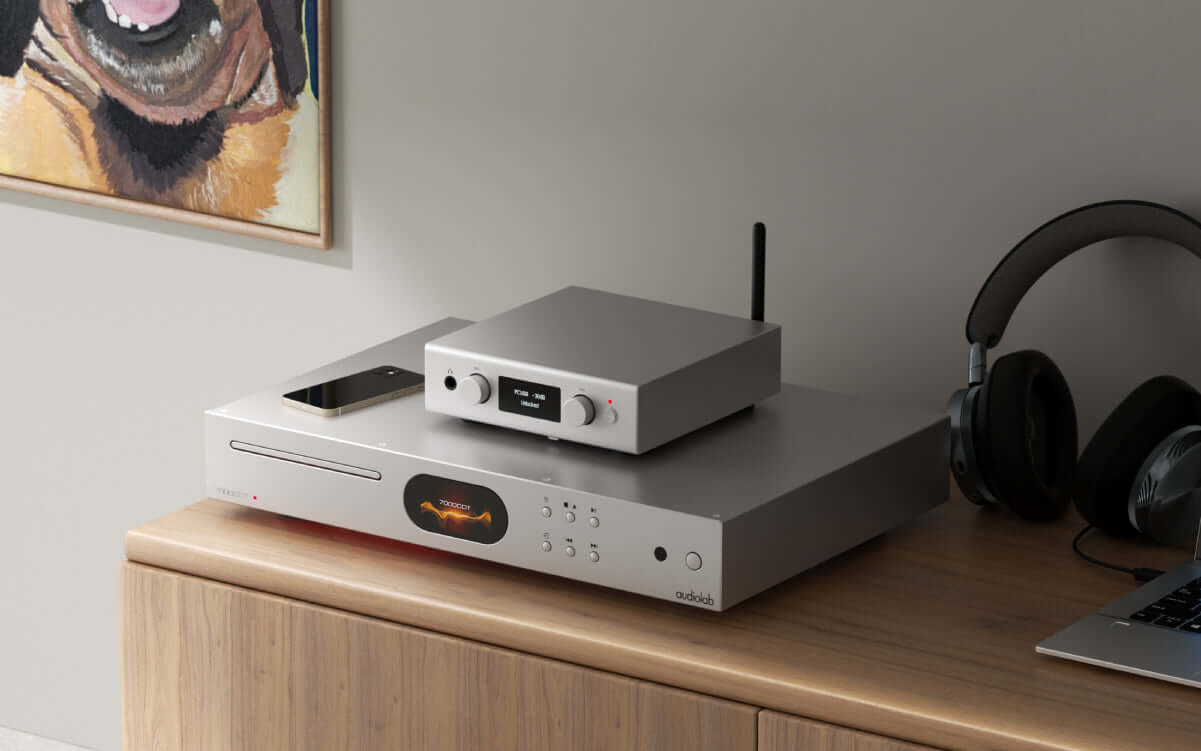
Darling would probably call that “flexible,” and Baldrick might even consider it “genius.” But then again, Baldrick could find himself tangled up in a speaker cable and blame it on “growing technological advancements.”
Audiolab is really hammering home the sound quality angle here, but of course, I can’t vouch for that until we have actually tested it. What I can tell you is that the device’s circuitry is laid out in such a way that it should keep interference at bay, plus there are low-noise power supplies for all the critical stages, fed by an offboard PSU. So, at least in theory, your signal shouldn’t sound like it’s been hiding out in a sock drawer.
For around $600 or £449, the D7 is clearly trying to make a strong case for itself, like some sort of underdog in a Dickensian novel, coming in to show the bigger players how it’s done. Let’s see if it lives up to the hype—after all, it’s not like we haven’t been let down by other DACs before that suck the life out of our favorite music.
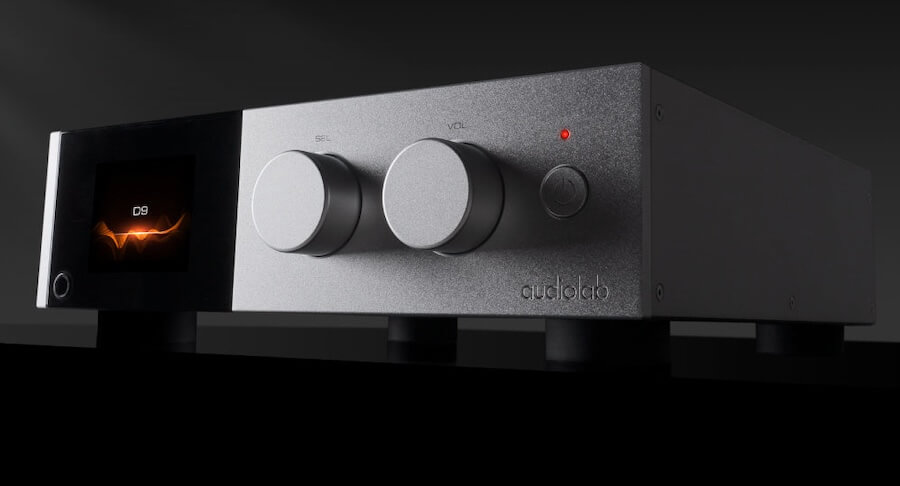
Audiolab D9: The DAC That’s Bigger, Badder, and Packs a Screen You’ll Actually Want to Look At
The Audiolab D9 is the D7’s more refined older sibling, with a build quality, features, and performance that surpasses its smaller counterpart. It shares some DNA with Audiolab’s flagship 9000 Series, but this one comes with a shiny, sleek screen — a feature that’s actually worth your attention.
Powered by ESS Technology’s ES9038PRO chip (because two channels apparently weren’t enough), the D9 comes with eight channels for reduced noise and distortion. Audiolab’s proprietary circuitry, master clock, and Class A post-DAC filter ensure that this DAC delivers the kind of sonic clarity and dynamics that might make you rethink what your music is really capable of — mostly some hyped up inner detail and extra clarity — although there can sometimes be too much of that with Audiolab.
Like the D7, the D9 handles all kinds of high-res formats — FLAC, ALAC, AIFF, APE, WAV, and, yes, even compressed legacy formats for the nostalgic audiophiles still clinging to MP3s.
And for the few still holding onto MQA (seriously, why?), it decodes that too, because why not keep the old horse in the race? It also has upsampling, is Roon Tested, and comes with the kind of circuitry you’d expect from a premium product, with an ultra-low-noise toroidal transformer and top-tier components in the post-DAC section.
So, if you’re looking for a DAC that’s a solid step up from the D7 — with a little less “bare minimum” and a bit more “wow” — the D9 might be exactly what you’re after. Just, you know, maybe leave MQA in the past where it belongs.
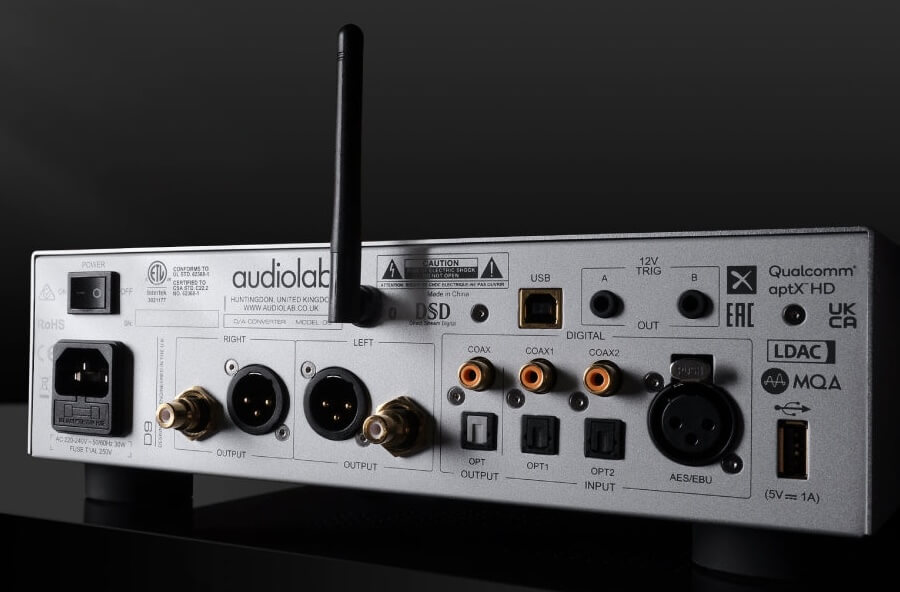
The Audiolab D9 retains all the same connections as the D7 — including the usual balanced XLR and RCA outputs — plus, it adds an AES3/EBU digital input for those who still haven’t realized that optical is not the best way to connect a high-end DAC. Oh, and it’s got Bluetooth too, but with Sony’s LDAC codec, so at least it has the decency to sound decent when you’re streaming wirelessly.
For headphone enthusiasts, Audiolab’s included the same headphone-amplifier circuitry as the D7, which they claim provides “spacious, detailed, and dynamic performance” — perfect for those who think their headphones are better than anyone else’s, whether they’re dynamic or planar.
The comes in around $1460 and £1099 which isn’t exactly pocket change, but hey, it’s Audiolab, so you’re paying for the experience — and it’s clearly aimed at those considering the latest gear from Audiolab and the Castle Windsor Loudspeaker Series.
Both the D7 and D9 will be on display at High End Munich 2025 in a couple of weeks, so you can see if they live up to all the hype.
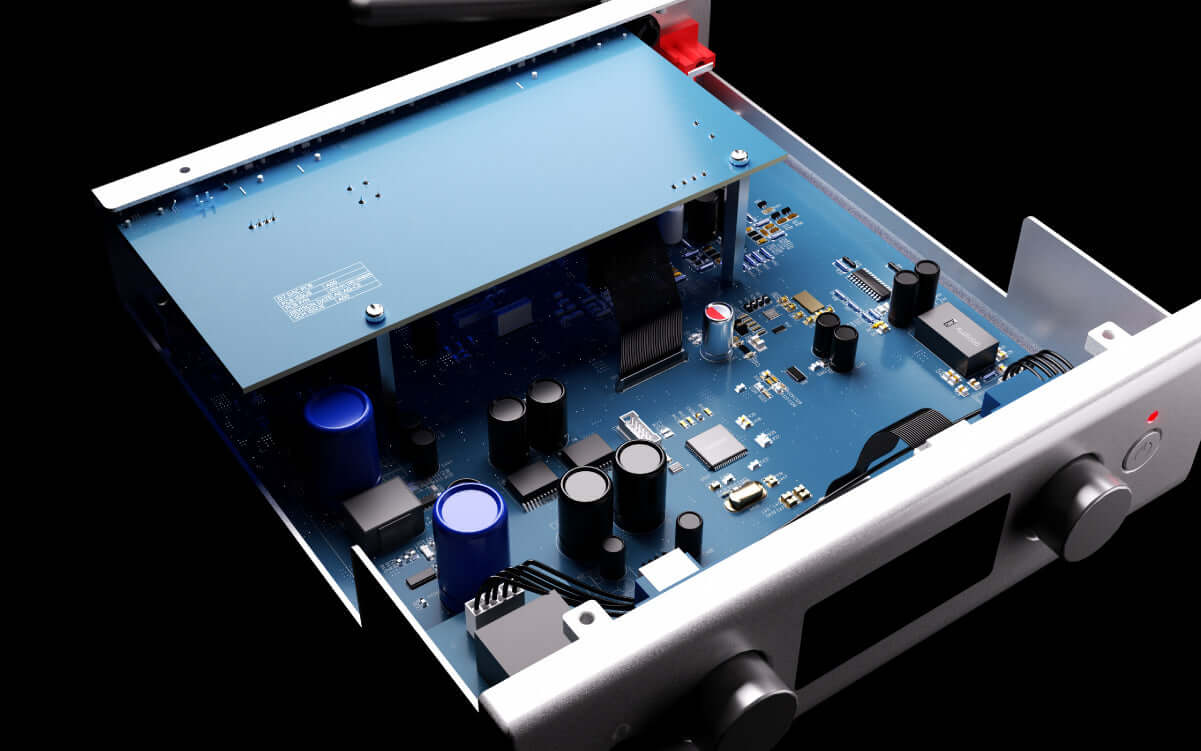
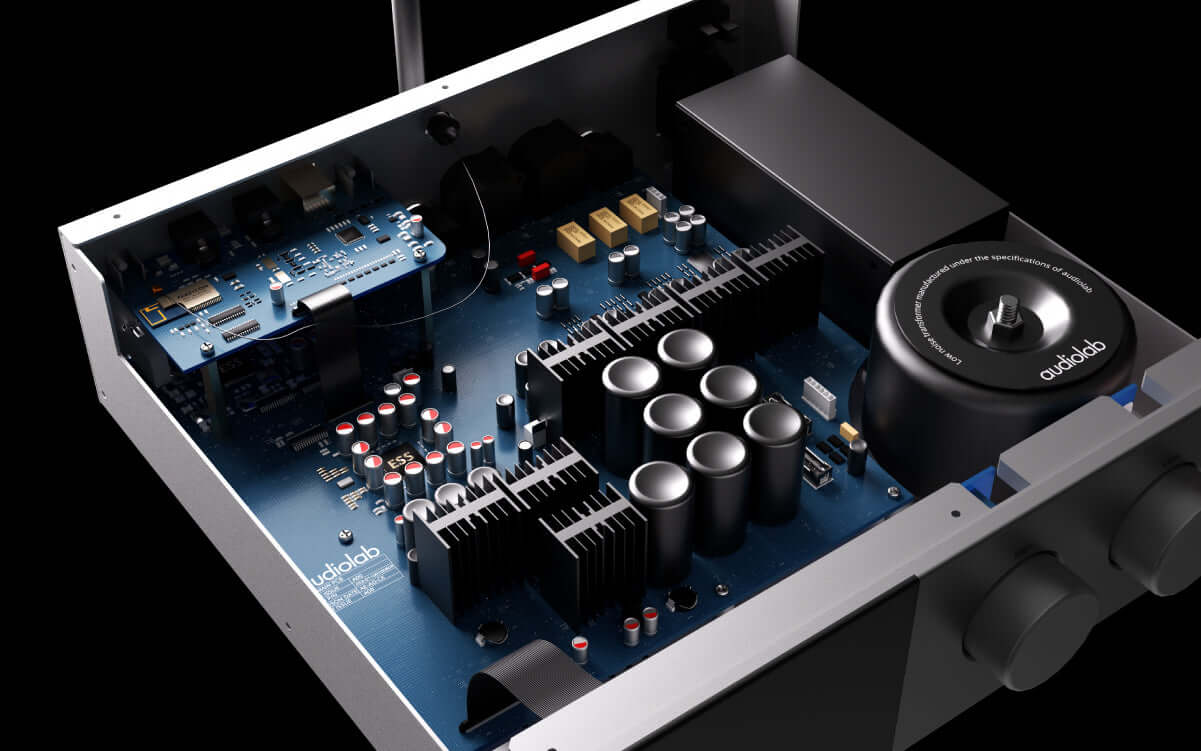
Comparison
| D7 | D9 | |
| MSRP | $600 | $1460 |
| Design Philosophy and Core Technology | ES9038Q2M 32-bit DAC MQA Full decoder (PC USB, Coax / Optical) OLED Display Bluetooth 5.1 (aptX / aptX HD) streaming Dedicated Current-Feedback Headphone Amp Supports playing USB memory device (MP3 / WMA / APE / AAC / WAV / FLAC) USB Firmware Upgrade | ES9038Pro 32-bit DAC MQA Full decoder (PC USB, Coax / Optical) 2.8″ 480×640 large size full view IPS LCD Bluetooth 5.1 (aptX / aptX HD / LDAC) streaming Dedicated Current-Feedback Headphone Amp VU Digital / VU Analogue Meter USB HDD Playback with MP3/WMA/AAC/WAV/FLAC/APE compatibility USB Firmware Upgrade |
| Inputs | 2 x SPDIF (Coax), 2 x SPDIF (Optical), 1 x PC USB (USB B), 1 x USB HDD (USB A), 1 x Bluetooth (aptX / aptX HD) | 2 x SPDIF (Coax), 2 x SPDIF (Optical), 1 x PC USB (USB B), 1 x USB HDD (USB A), 1 x Bluetooth (aptX / aptX HD), 1 x AES3/EBU |
| Outputs | 1 x RCA, 1 x XLR, 1 x Headphone, 2 x 12V Trigger, 1 x Optical, 1 x Coax | 1 x RCA, 1 x XLR, 1 x Headphone, 2 x 12V Trigger, 1 x Optical, 1 x Coax |
| Sampling Frequency | Optical/Coaxial: 44.1kHz – 192kHz USB HDD: 44.1kHz – 96kHz PC USB: 44.1kHz – 768kHz (PCM) / DSD64, DSD128, DSD256, DSD512 | Optical/Coaxial: 44.1kHz – 192kHz USB HDD: 44.1kHz – 96kHz PC USB: 44.1kHz – 768kHz (PCM) / DSD64, DSD128, DSD256, DSD512 |
| DAC | ||
| D to A Converter | ES9038Q2M | ES9038Pro |
| Output Level (0dBFS, 1kHz) | 2.05Vrms (RCA), 4.1Vrms (XLR) | 2.05Vrms (RCA), 4.1Vrms (XLR) |
| Total Harmonic Distortion (THD) | < 0.001% (1kHz @ 0dBFS) | < 0.001% (1kHz @ 0dBFS) |
| Frequency Response | 20Hz–20kHz (+/-0.2dB) | 20Hz–20kHz (+/-0.1dB) |
| Output Impedance | 120 ohm | Not specified |
| Max. Sampling Frequency | USB HDD: 96kHz Optical, Coaxial: 192kHz PC USB: PCM768kHz, DSD512 | USB HDD: 96kHz Optical, Coaxial: 192kHz PC USB: PCM768kHz, DSD512 |
| Signal-to-noise Ratio (S/N) | > 115dB (A-weighted, RCA)> 117dB (A-weighted, XLR) | Not specified |
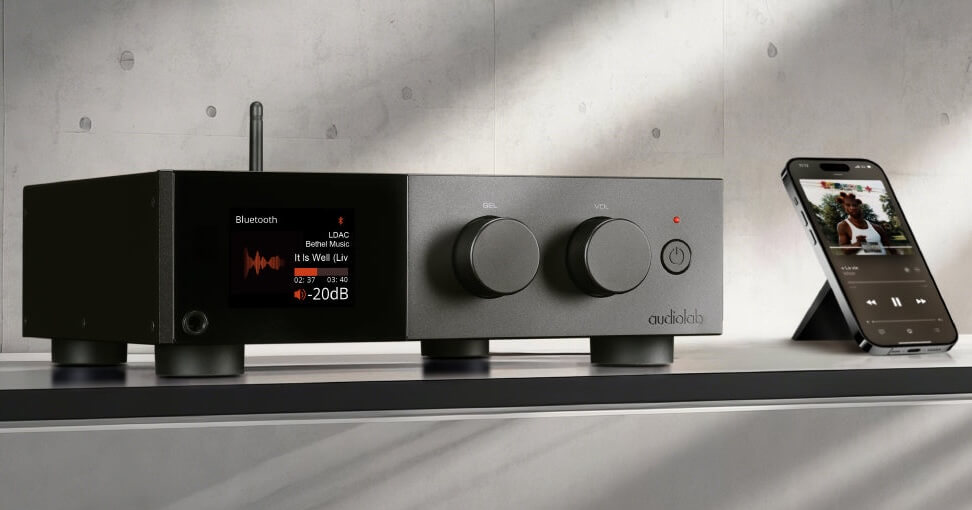
The Bottom Line
The Audiolab D7 and D9 DACs offer plenty of versatility, with both models doubling as pre-amplifiers and headphone amplifiers. The D7, priced at a reasonable $600, handles high-res audio, MQA decoding, and offers all the connections you need to integrate seamlessly into your setup.
The D9, at $1,460, takes things up a notch with even more premium features and an upgraded headphone amp section, making it a solid choice for audiophiles who want more power and control. Both pack great performance for the price—without the need to sell one of your kids.
Related Reading:

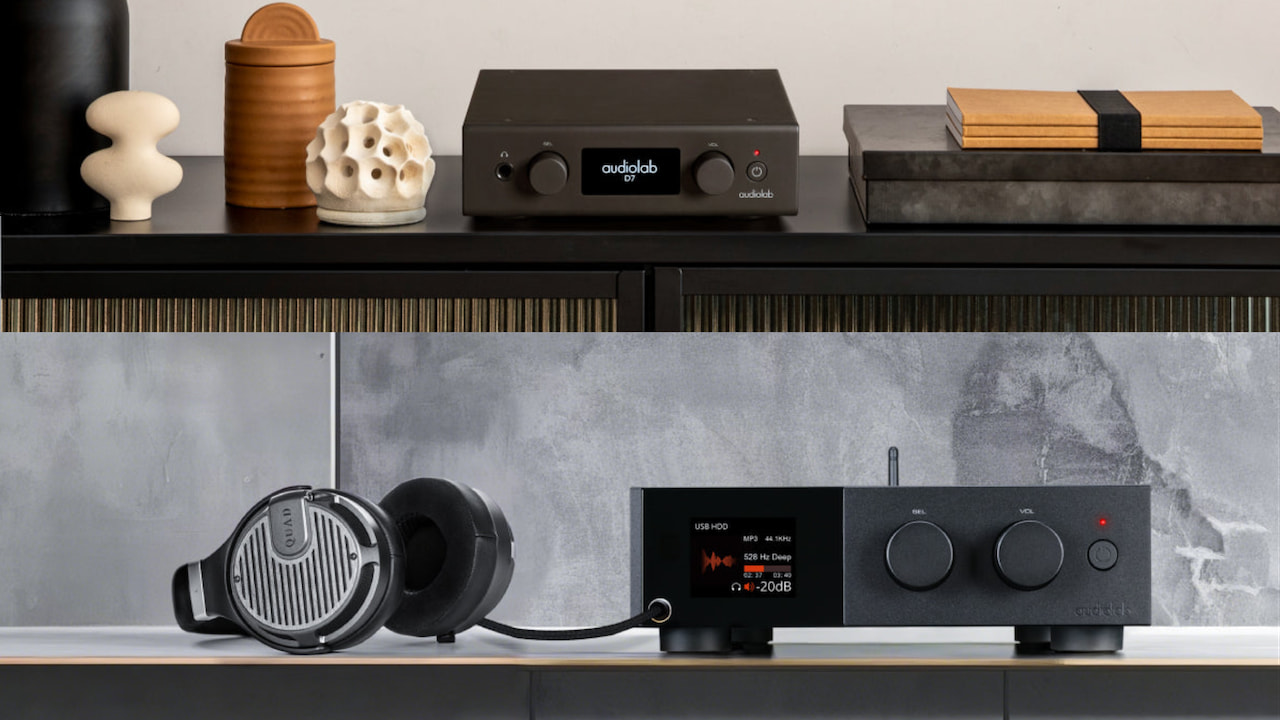
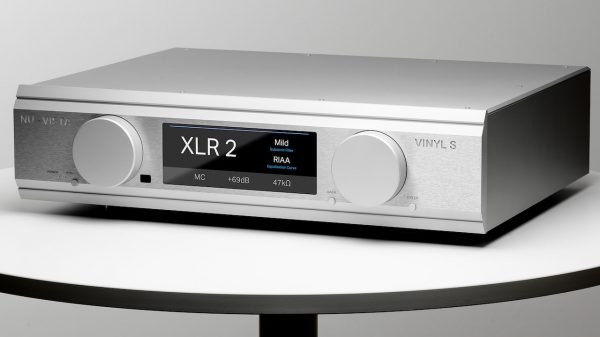
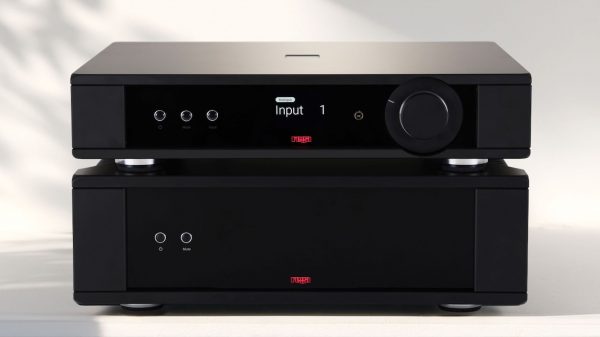
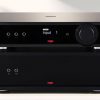
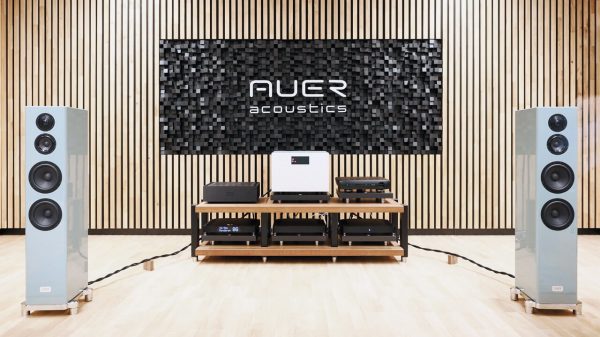
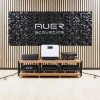
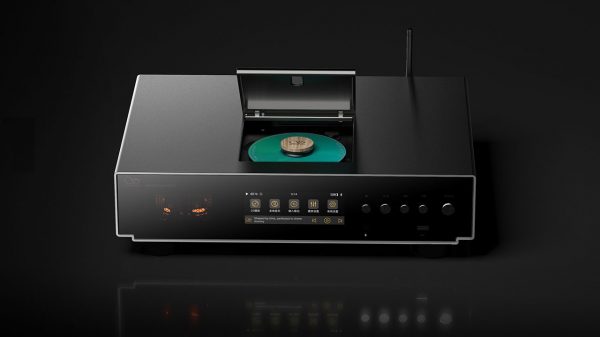
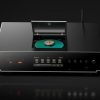
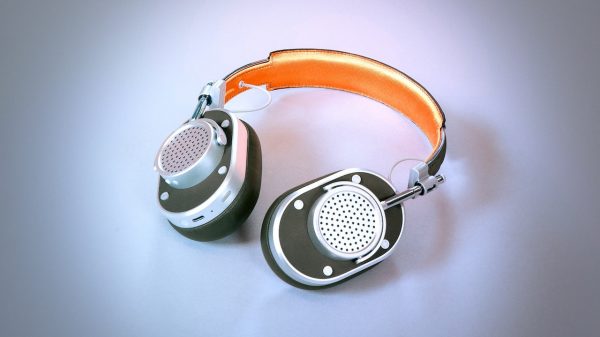
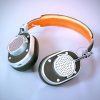
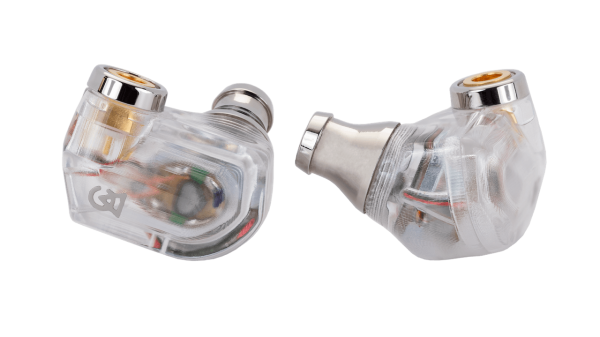
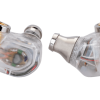
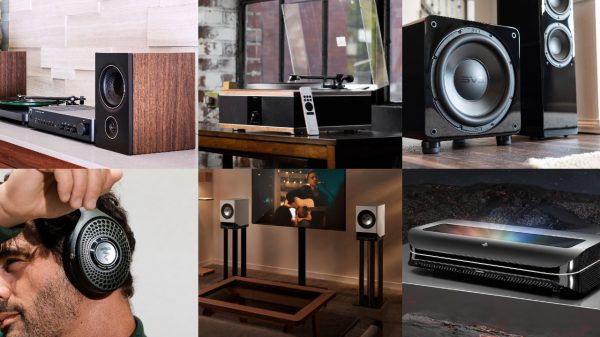
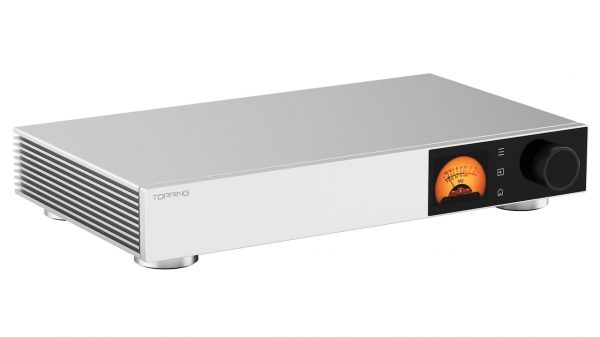
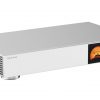
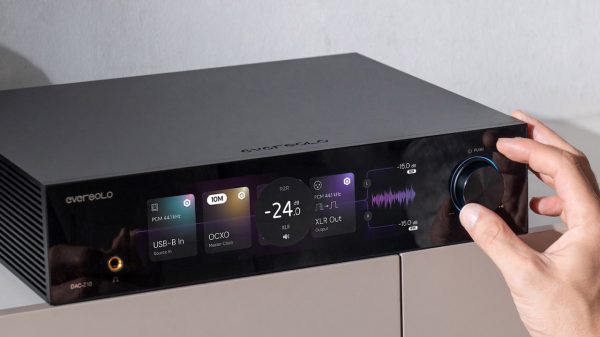
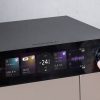


















Antonio Brown
May 4, 2025 at 6:38 pm
The D9 feels like overkill, but the D7 has me intrigued as I have an older vintage Marantz receiver with a broken headphone output and I already own a WiiM Pro Plus that would seemingly work well with this. Like the aptX HD support and you’re correct — MQA is nonsense.
Is this already available here?
Ian White
May 4, 2025 at 6:44 pm
Hopefully not related to the football “Antonio” Brown but I digress.
I’ve been an Audiolab fan for like 30+ years (minus their weird period when they were owned by the racing car company), and owner of the 6000A for more than 5 years. I use it daily. Super reliable. Love the preamp/DAC/phono stage. The tonal balance, however, is the caveat that I must mention.
And I’m saying this not as a dig but based on reality. The 6000A has a very cool tonal balance that is not for everyone. It’s lean. Bass performance is tight and quick, but very lean. The amplifier needs a much warmer sounding pair of loudspeakers to be enjoyable. It’s the polar opposite of the NAD C316BEE V2 which I also own.
It’s also far more powerful than it looks. Can drive the Wharfedale Super Denton rather well. Knowing all of that…I suspect these offer a similar tonal balance and presentation. Lean, clear, and detailed as hell.
Synergy here with the right amplifier will mean success or totally hating it.
IW
Antonio Brown
May 4, 2025 at 6:57 pm
Appreciate the feedback and I guess because it’s being introduced at High End Munich — we’re probably 1-2 months away from seeing it here.
So running the WiiM Pro Plus into this and into my Marantz would make sense. The speakers are older ProAc monitors that I use in my home office system. Already a tad lean sounding.
Can this be used with something like the Q Acoustics M40? My eldest got a pair for Christmas and needs more inputs and a headphone amplifier.
Thank you!
Ian White
May 4, 2025 at 10:20 pm
AB,
That would make some sense. Especially if you don’t want to spend anymore on something like the WiiM Ultra. In regard to the usability with the Q Acoustics M40, that would actually make sense for a few reasons.
1. Superior DAC
2. Gives you headphone amplifier as well
3. You can still stream using BT to the speakers if you decide to use a smart phone.
4. Because the D7 is also a pre-amplifier, you can run an optical from the TV, CD player using its coaxial output (assuming that it has one) and use optical or coaxial from the WiiM. 3 sources and you can use the RCA input on the M40 for a phono stage.
IW
ORT
May 7, 2025 at 3:27 am
D7…
MQA?! “Master Quisling Authenticated”
WTF?!
NFW!!
ORT
Ian White
May 7, 2025 at 9:52 am
ORT,
Read between the lines. It’s a format on life support. And you can turn it off. MQA. Not me.
IW